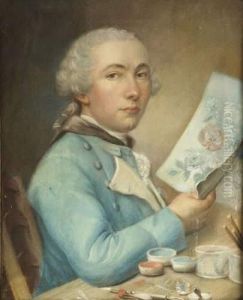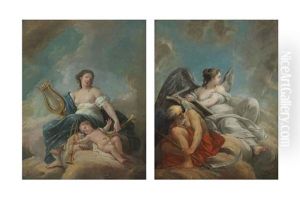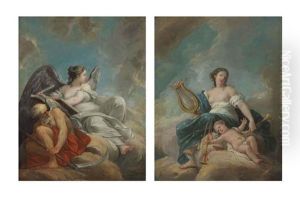Philippe De Lasalle Paintings
Philippe de Lasalle was a preeminent French silk designer and manufacturer who left an indelible mark on the 18th-century textile industry. Born in Lyon, France, in 1723, de Lasalle's contributions were instrumental during a period when Lyon was the European capital of silk weaving. His innovative techniques and artistic flair not only elevated the quality and aesthetic appeal of silk fabrics but also significantly influenced the fashion and interior decoration styles of his era.
De Lasalle's early life was marked by an intense apprenticeship in the art of silk weaving, a craft that Lyon was renowned for globally. He demonstrated an exceptional talent for drawing and design, which he seamlessly integrated into his work with silk. De Lasalle's unique approach to silk weaving incorporated a variety of techniques, including weaving, painting, and embroidery, which allowed him to produce textiles of unparalleled complexity and beauty. This innovative methodology enabled him to create fabrics that were not only visually stunning but also rich in texture.
Throughout his career, Philippe de Lasalle was known for his entrepreneurial spirit and keen business acumen. He managed to establish a successful workshop that became famous for its high-quality silk products, attracting the attention of the French nobility and royalty across Europe. His designs often featured intricate floral patterns, landscapes, and scenes from mythology, reflecting the Rococo tastes of the time. De Lasalle's ability to foresee and adapt to changing fashion trends helped him maintain a prominent position in the competitive world of luxury textiles.
Despite facing challenges such as financial difficulties and the tumultuous events of the French Revolution, de Lasalle's reputation and legacy endured. He continued to innovate in the field of textile design until his death in 1804. Today, Philippe de Lasalle is remembered not only as a master of his craft but also as a visionary artist who pushed the boundaries of textile design. His works are preserved in several museums around the world, serving as a testament to his enduring influence on the decorative arts.


